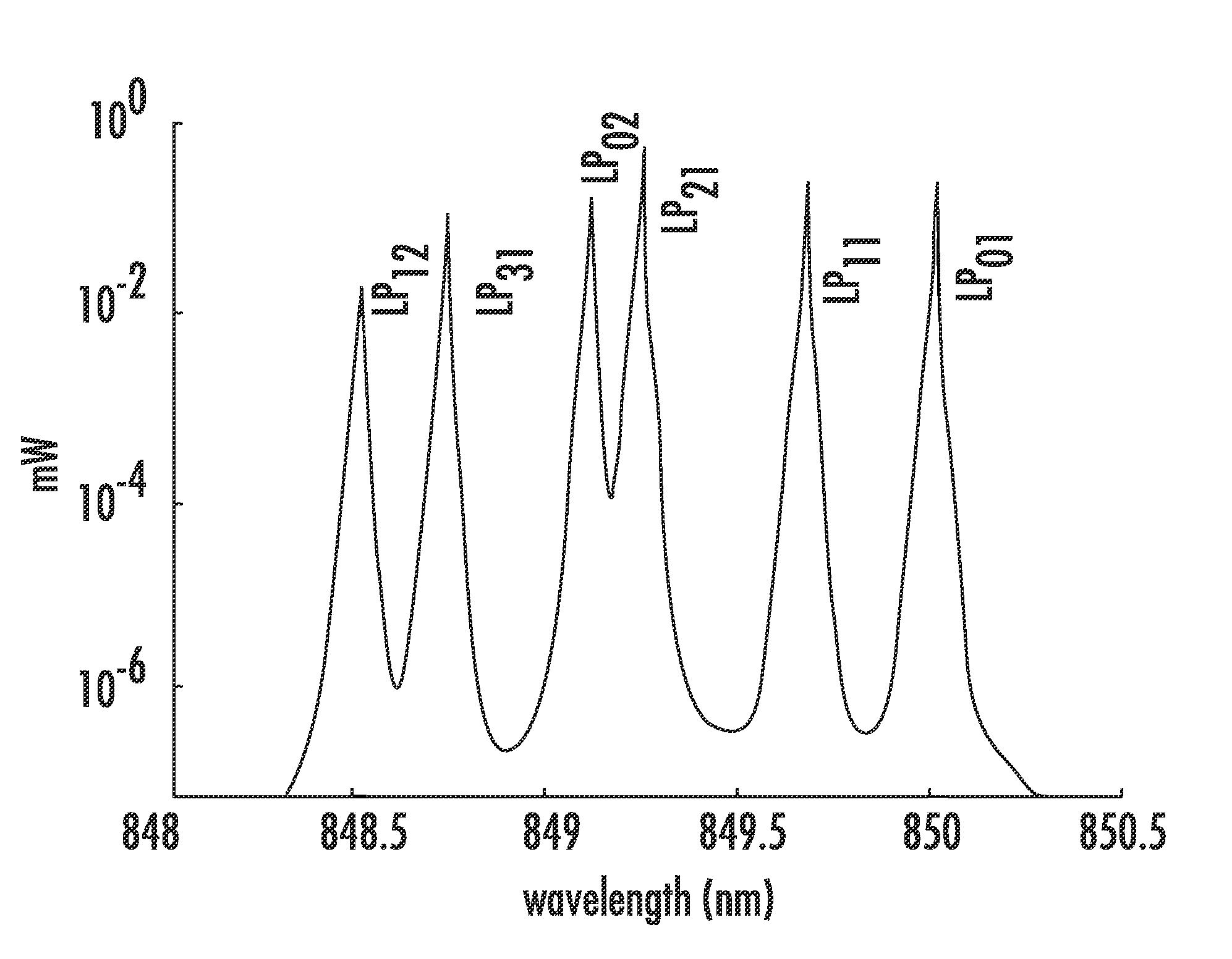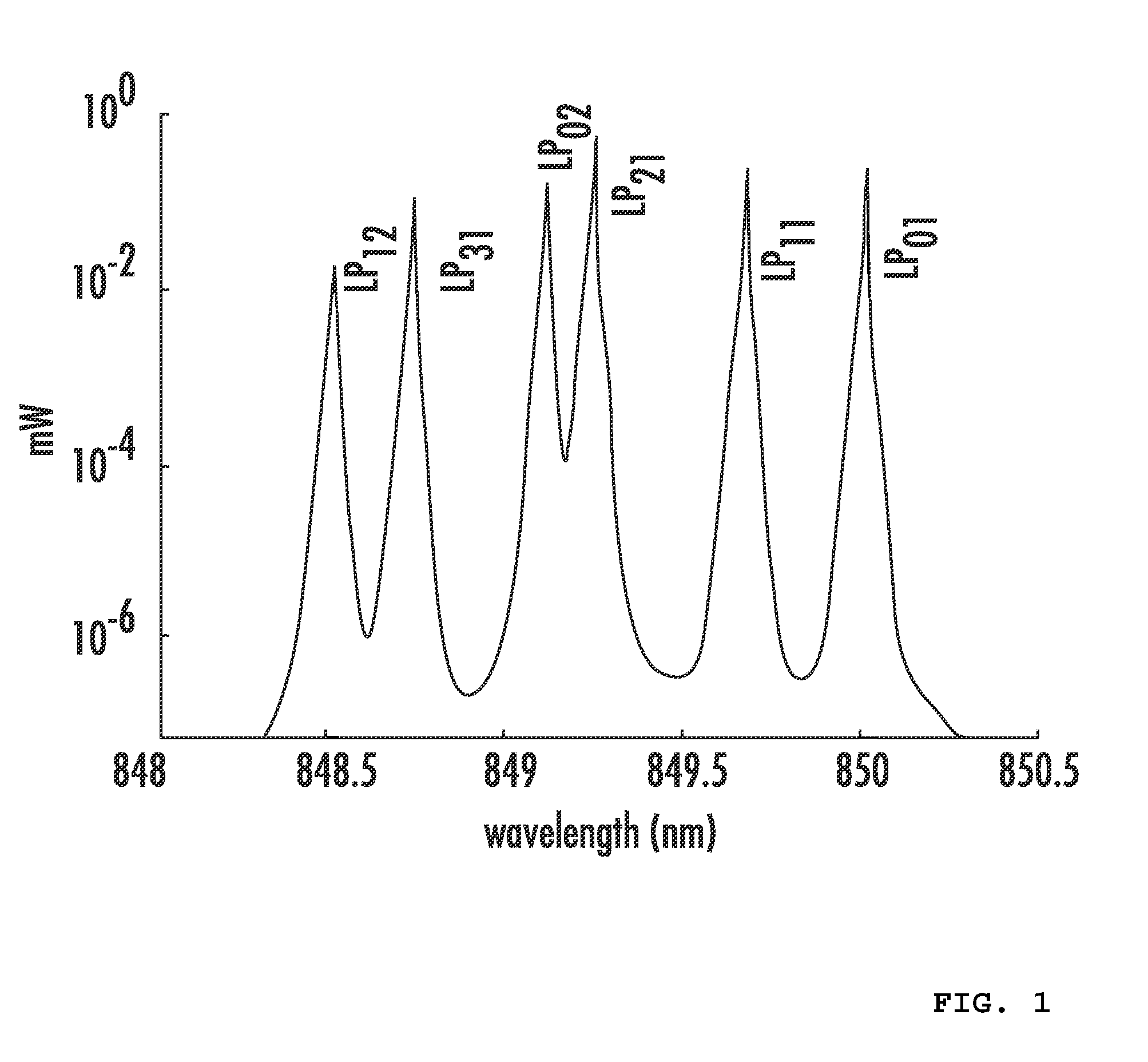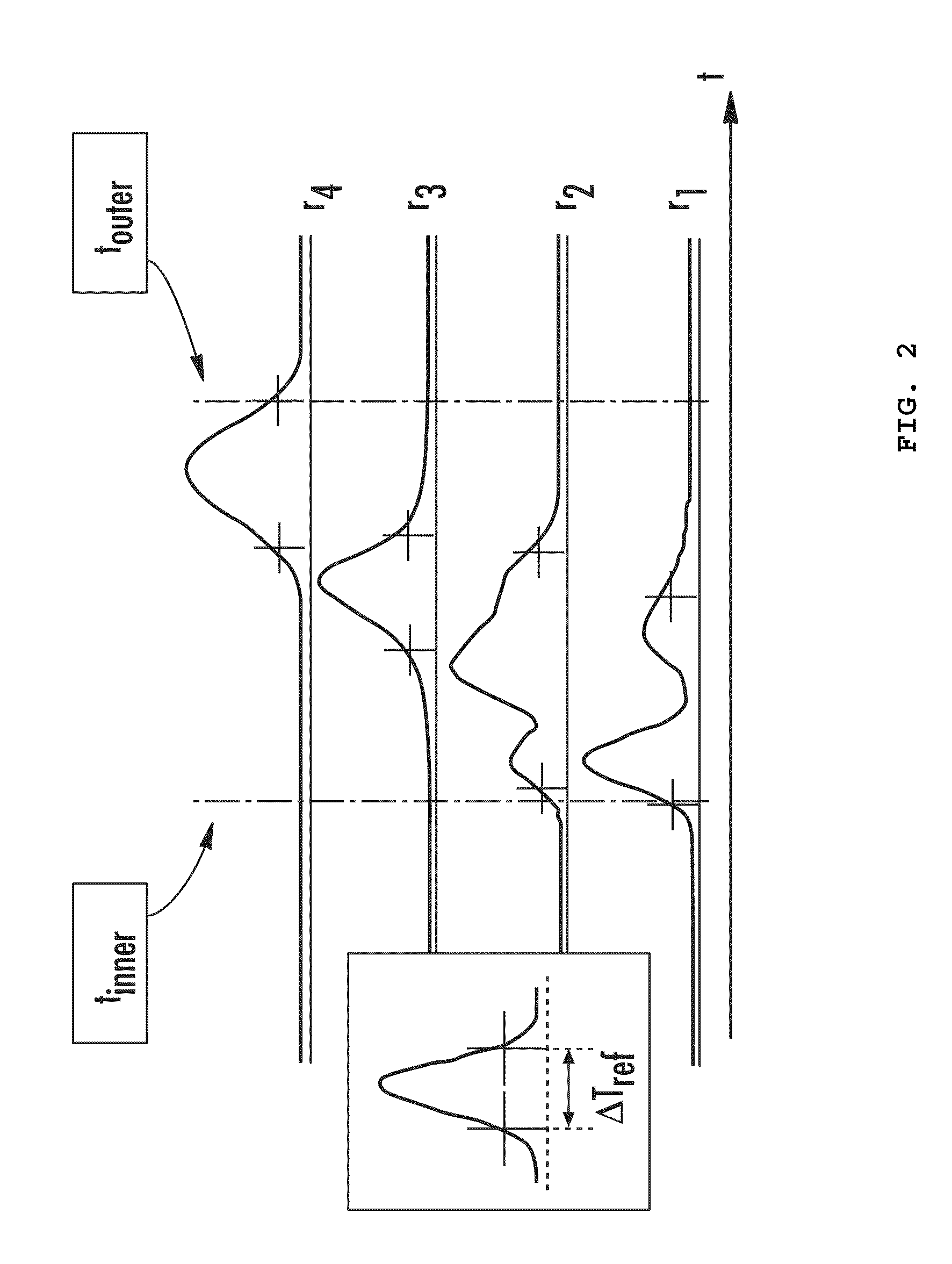Multimode Optical System
- Summary
- Abstract
- Description
- Claims
- Application Information
AI Technical Summary
Benefits of technology
Problems solved by technology
Method used
Image
Examples
Embodiment Construction
[0041]In this regard, the invention proposes an improved multimode optical system for use with a polychromatic source, such as a VCSEL laser, having several transverse modes.
[0042]FIG. 1 illustrates an emission spectrum of a VCSEL laser, with a mode centered on 850 nanometers for the excitation of the fundamental mode LP01. FIG. 1 illustrates that each transverse mode of the laser has its own wavelength. The maximum RMS (Root Mean Square) spectral width generally authorized for high-speed transmission is 0.46 nanometers RMS for the VCSEL (as defined in the standard IEEE 802.3ae).
[0043]In this regard, when the optical signal emitted by the VCSEL is introduced into the multimode fiber, each transverse mode of the VCSEL diffracts differently. The transverse modes of the highest order diverge more rapidly (i.e., due to their phase and spatial distribution of their energy), and will therefore be coupled more specifically in the high order modes of the fiber. Those having ordinary skill i...
PUM
 Login to View More
Login to View More Abstract
Description
Claims
Application Information
 Login to View More
Login to View More - R&D
- Intellectual Property
- Life Sciences
- Materials
- Tech Scout
- Unparalleled Data Quality
- Higher Quality Content
- 60% Fewer Hallucinations
Browse by: Latest US Patents, China's latest patents, Technical Efficacy Thesaurus, Application Domain, Technology Topic, Popular Technical Reports.
© 2025 PatSnap. All rights reserved.Legal|Privacy policy|Modern Slavery Act Transparency Statement|Sitemap|About US| Contact US: help@patsnap.com



